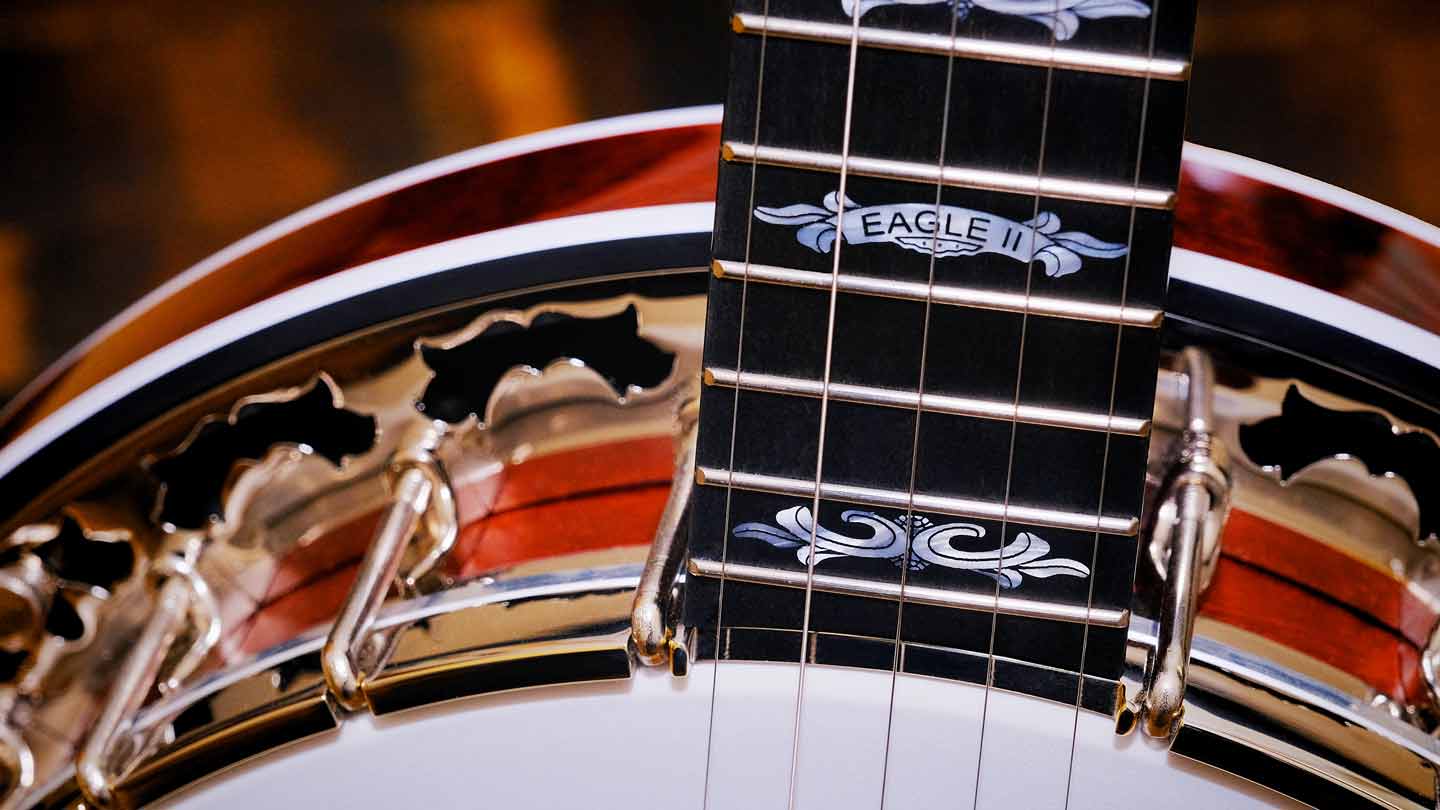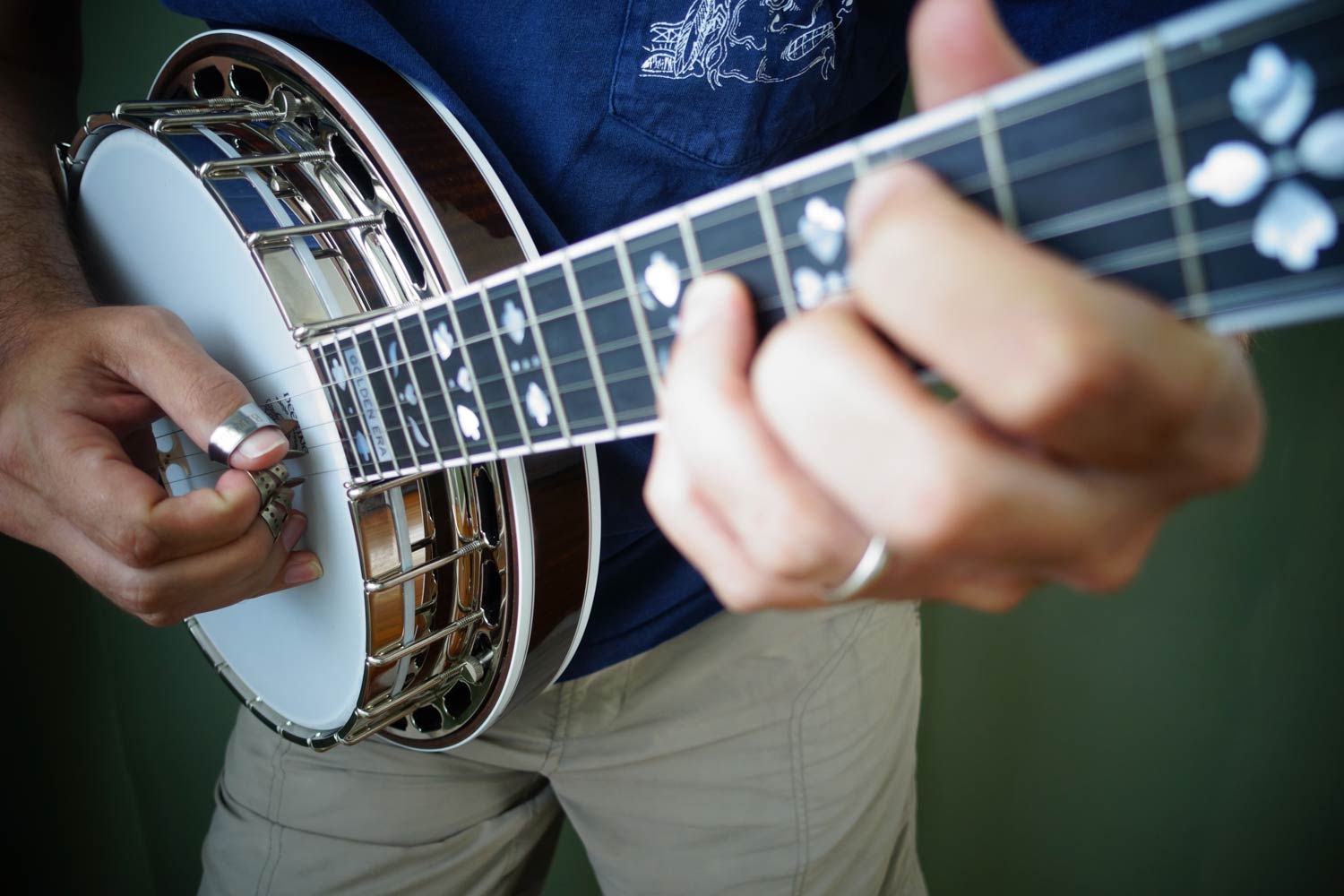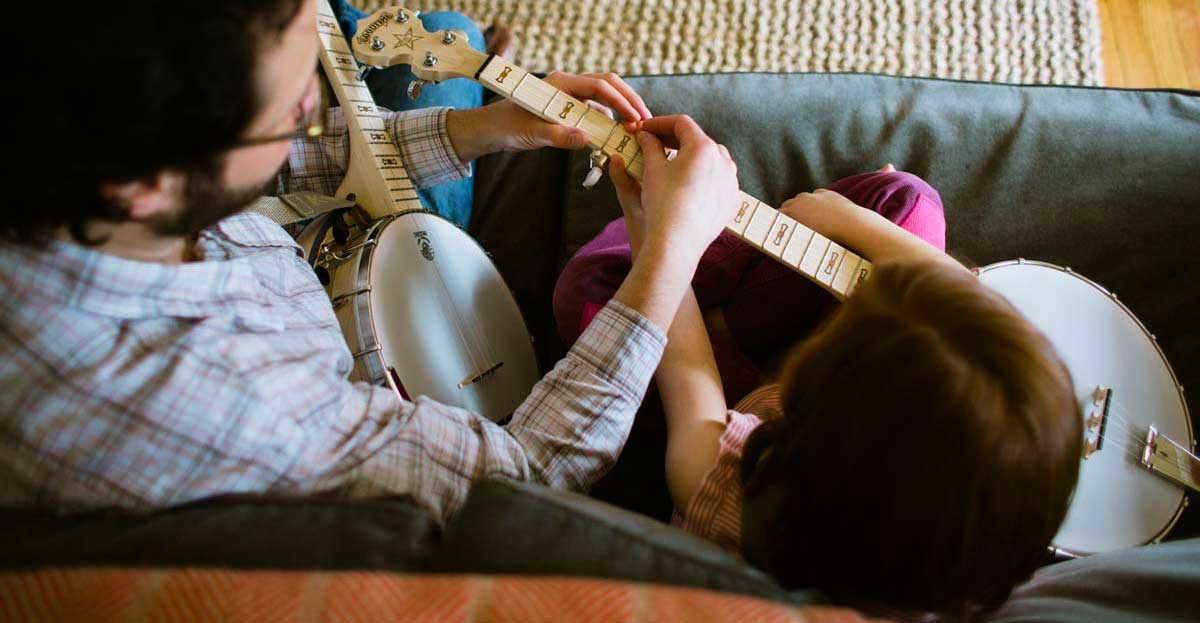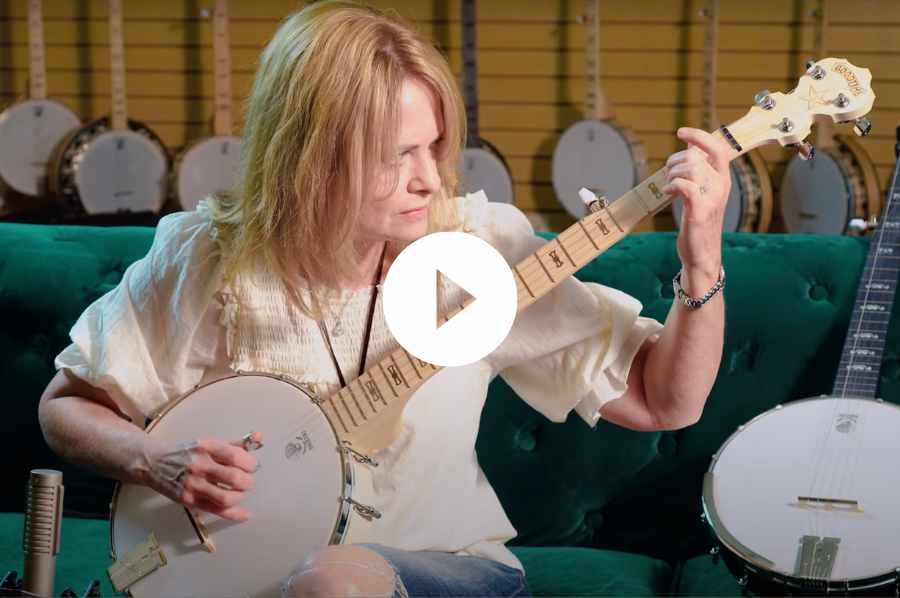How To Find and Fix Buzzing In Your Banjo
While the gentle buzzing of bees in the summer is pleasant, buzzing on a banjo is just plain annoying and, as they say, “it just ain’t right!” Let’s take a look at some possible causes for what will eventually plague every banjo player in their playing career. References are made in this article to the Deering/Goodtime Maintenance Manual.
GENERAL CATEGORIES:
- Strings
- Action height
- Bridge slots
- Nut slots
- Fret condition
- Tailpiece position/condition
- Armrest position/attachment
- Loose hardware
WHAT TO LOOK FOR:
1. Strings - the wrapping can come loose on the wound strings and give you a subtle buzz; this can be especially true of 6-string and 12-string banjos. Replace the strings if needed.
2. Action height
A. Action Too low: If it is less than 1/8” at the 22nd fret it is too low.
To adjust this:
Check head tension; if bridge is in a “valley” it is too soft. Tighten the
banjo head.
Check neck relief using truss rod test if you have a Deering upper line banjo; Goodtime banjos do not have a truss rod in the neck; see maintenance manual at http://www.deeringbanjos.com/book/2 , page 15. If the neck is
too flat, you will get buzzing. Follow directions on pg. 16 to adjust
the relief using the truss rod.
B. Action Too High:
Neck has pulled away: Check the bottom of the heel. If the neck has pulled away from the rim, tighten the neck using the coordinator rod in the pot.
If the neck won’t tighten, the hanger bolts could be stripped. This can happen
if the co-rod has been cranked too tight. Call factory for advice.
Use Coordinator rod to lower action; see pg. 17 of manual. If the co-rod adjustment
has reached its limit, contact the factory at 800-845-7791.
3. The Bridge: A bridge buzz sounds like a sitar-like whine/annoying twang. You will need to check the bridge slots to make sure they are not binding the string or you may need to change the bridge angle. You will need a very fine file. The bridge angle is down and back toward the tailpiece. Do not DEEPEN the slot. If there is a burr, clean it out with the file or adjust the angle.
4. The Nut: If the string buzzes with the string played open but not fretted, you may have to work with the nut.
- To loosen binding of string: lubricate the slot by pulling the string out and using a #2 lead pencil. Work some of the lead into the slot and then put the string back in. Using your tuning peg, slide the string back and forth through the slot. Retune. If the slot was binding the string, this lubrication will help.
- Nut slot too wide: Loosen the string and lay a piece of paper across the slot. Put the string back over the slot and tighten it down into the slot. Tear off the excess paper, leaving only the paper in the slot to fill the excess space temporarily until you get a new nut installed. Nut slot is too deep: The bottom of the string should be 1/16” above the fingerboard at the nut. If it is lower than this, the nut slot is too deep. Have nut replaced by luthiers.
5. Fret condition: Frets are usually made of nickel silver and banjo strings are usually made of steel.
- Worn frets: Frets can wear down with use and buzzing can occur when pressing the string on a worn fret if the next fret down on the fingerboard toward the head is not worn. Replacing the frets should be done by individuals familiar with this process to prevent fingerboard damage.
- Loose frets: Frets can become loose due to expansion/contraction of neck wood due to changes in humidity. A raised or loose fret will cause the string to buzz. Repair fret.
6. Tailpiece:
- Too low to head: adjust to about ¼” off the top of the head at the front edge.
- Loose tailpiece: tighten using long hex nut at base of tailpiece.
- Cover rattles: The Presto or Clamshell style tailpieces have covers over the strings that can sometimes rattle. You can put some felt on the inside of the cover or work on the attachment of the lid by opening up the flange ends to tighten or you can get a new tailpiece w/o a cover.
7. Armrest:
- Too low to the head: Loosen the clamping screw, slide the armrest up, and re-tighten. If the head is very old (esp. with hi crown heads) it may be stretched out too far. When you put the tension hoop in place, it will slip down so far over the head itself that the top edge of the head is above the tension hoop instead of below it. Because of this, you may not be able to move the armrest up enough with the clamp and screw to clear the banjo head. In this case, you should replace the banjo head.
8. Loose hardware: The banjo is a playing ground (no pun intended) for many metal parts. These can rattle or buzz when you play. Check the nuts on the coordinator rods, the bracket shoes and nuts, a possible loose tuning peg. In other words, make it all ship shape!!
9. Tools: There are some basic tools you need to have on hand to adjust your banjo. Some you will have in your home/shop tool kits. If not, you may find what you need at our online store.
YOU CAN DO IT! Don’t hesitate to try these very basic tips on buzzing. YOU CAN DO IT! Making banjo more fun to play and giving you the information you need to do that is what I am trying to do. Have more buzzing tips? Send them to me so I can share them with everyone else.

















Great advice, keep it coming. Thankyou.
Leave a comment